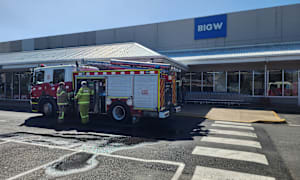By Rachael Campbell, Agriculture Victoria Ballarat
NOW that paddocks are being cut for silage, dairy effluent can be applied to areas with some green leaf still present. This can be done after cutting to promote valuable pasture regrowth for extra grazing and to replace lost nutrients.
Dairy effluent contains many essential nutrients, including nitrogen, phosphorus, and potassium.
An effluent test is the best way to determine the most appropriate application rate for your farm, as nutrient levels vary widely between farms.
The total potassium applied per application should be no more than 60 kg of potassium per hectare and no more than 120 kg of potassium per hectare per year.
Nitrogen application should be no more than 60-80 kg nitrogen per hectare per application. Heavier applications increase the risk of problems such as nitrate poisoning, mineral imbalances and losses to the environment.
If a chemical analysis isn’t available, a rule of thumb is to apply liquid effluent at a rate of one megalitre per four ha to areas where there is no likelihood of runoff from the property. Target paddocks that are known to have lower nutrient levels.
Remember to restrict cattle grazing for at least 21 days after the application of effluent, as this withholding period will overcome palatability or fouling issues, reduce the risk of pathogens and allow the plants time to respond to the nutrients.
Sludge will also need to be removed from your first pond every so often, depending on how the pond was designed.
This can be applied to paddocks about to be cultivated for a crop or sprayed thinly on pasture at similar times to the effluent. Application rate should be based on an effluent test; however, if this is not available, a guide for applying sludge to pasture is a rate of one megalitre per 12 ha.
Vacuum tankers and other specialised equipment, often used by contractors, can be useful for this purpose. Withholding periods tend to be longer for sludge applications than liquid effluent, and these paddocks shouldn’t be grazed until the grass has grown through the sludge layer.
Over the longer term, continue to conduct regular soil testing where effluent is being applied to monitor nutrient levels and soil health.
For more information about using dairy effluent effectively, contact Rachael Campbell on rachael.campbell@agriculture.vic.gov.au
For information on available drought support, visit agriculture.vic.gov.au/drought or call 136 186.









